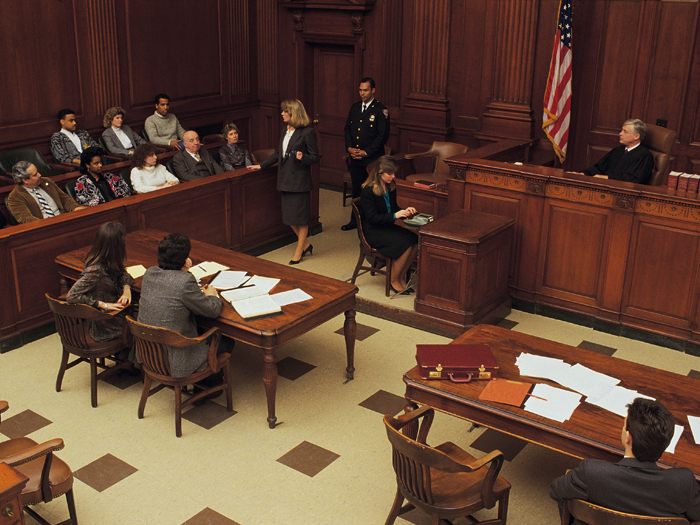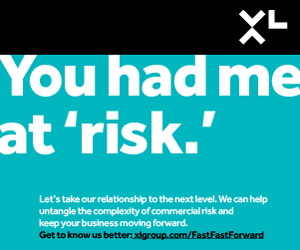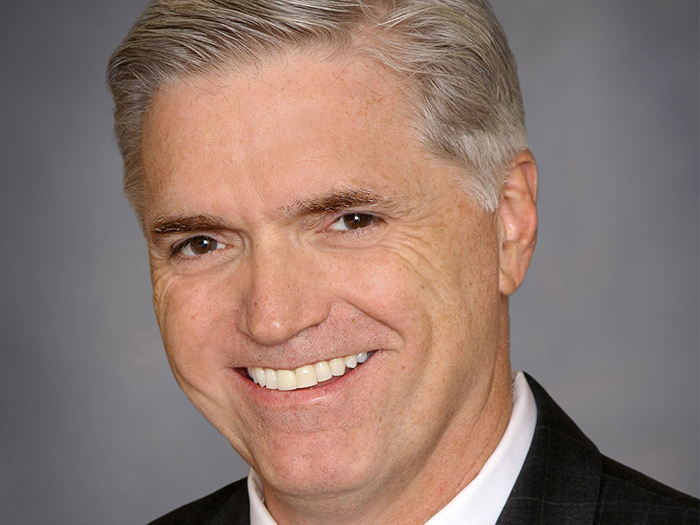Risk Scenario
Minnick Engineering 911
Disclaimer: The events depicted in this scenario are fictitious. Any similarity to any corporation or person, living or dead, is merely coincidental.
The Crackup
To a disinterested observer, the sight of a middle-aged civil engineer using the company parking lot on a spring afternoon as a dressing room would be, at best, an example of bad taste.

But former Minnick Engineering employee Bill Hayes wasn’t getting ready for a game that afternoon. No, he had mayhem on his mind.
Hayes, terminated just two hours previously, got his jersey on and grabbed a metal softball bat from the back of his SUV.
Hayes paused, arched his back and let out a wounded scream. Then he charged the front door of the civil engineering company.
Matthew Forrester, just two years out of college, was the first Minnick employee to see Hayes coming.
“Stop Bill, don’t do it!” Forrester yelled and picked up a plastic chair in an attempt to slow Hayes down.
With one swipe of the bat, Hayes knocked the chair out of Forrester’s grasp and shattered Forrester’s left forearm.
Forrester’s scream of pain alerted a handful of employees, including Linda Minnick, the daughter of the company founder and current CEO, who was in the process of interviewing a job candidate in a nearby conference room.
Linda jumped up, the shocked job candidate right behind her, and tried to get to the conference door before Hayes did. But Hayes, a former college middle linebacker, was too strong and too quick.
He stuck the bat in the narrowing door crack, then used it to violently thrust the door back open. Hayes got in three swings before the job candidate chased him out of the room.
The attack left Linda Minnick with some cracked ribs and the job prospect with a shattered jaw.
“Who you gonna’ fire next, Linda?” Hayes yelled as he ran deeper into the building. Some employees ran for cover and others set off after Hayes.
Linda Minnick had terminated Bill Hayes a scant 127 minutes previously, but it had been a long time coming.
The interview with the young job prospect filled her with optimism — at least until Bill Hayes roared back into the building and carried out his act of revenge.
In pain but trying to focus, Linda Minnick looked out the window to see a Channel 4 television crew rolling into the company parking lot.
“How did they get here so fast?” she said to no one in particular, as an administrative assistant knelt down next to the stricken job applicant, who was sitting in a nearby chair in severe pain.
Right behind the news truck was a police cruiser.
“What?” Minnick said again, to no one. In the space of the last two minutes, she felt that she was becoming mentally unhinged.
The History
The shock of the attack wasn’t the only cause of Linda Minnick’s confusion.

When the Springfield Township Police escorted Bill Hayes out of Minnick Engineering, this time for the last time, he was in handcuffs. Channel 4 was there to record the whole thing.
The television crew was there, courtesy of Hayes himself. Before his onslaught, Hayes had called his cousin Tommy, a Channel 4 cameraman, and told him he should come to the Minnick offices that afternoon, that he was going to “see some things.”
Linda was weak and in shock. The pain of her cracked ribs felt like someone was jabbing a knife into her lung. She could only sit and watch the police sergeant shove Bill Hayes’ head down into the cruiser.
But just before Hayes was shoved into the car, he caught Linda’s eye and smiled a demented smile.
A shiver went through Linda as she watched the patrol car roll away.
“This is all my fault,” she said to herself.
Linda’s memory provided it for her all too clearly. Five years ago, Bill Hayes punched an office wall during a meeting that was called to deconstruct some engineering errors in a public sector project.
Then, three years later, Mrs. Yost, a kindly woman who worked in sales administration, was working late one night and saw Bill Hayes urinating in a potted plant by the copy machine.
It was a case of “He said, she said.”
Hayes denied doing it. Mrs. Yost, who was 67 and close to retirement, became emotional when questioned about the incident and seemed to want to put it out of her mind. Again, no action was taken against Hayes.
Minnick was always a family-run operation- handling employee situations like the one Hayes presented was way beyond the realm of what Linda was prepared for.
The day of Hayes’ termination she had finally had enough of his inconsistent performance and took that step without thinking further on the potential reaction that it may have elicited.
Minnick was ill prepared for this tragedy. She knew that now as surely as she felt the stabbing pain in her side where her ribs were cracked.
A paramedic ran up to Linda Minnick.
“See to him first,” Minnick said, nodding to the seriously injured engineering graduate sitting in a nearby chair.
The initial toll from Hayes attack was staggering enough. There was the first wave of injuries to Linda Minnick, Matthew Forrester and the job applicant, Henry Neal, whose jaw injury required extensive and expensive reconstructive surgery.
But Hayes had also injured three more people, two of them seriously, before the police got to him. One injured party was the employee of a contractor, Warren B. White Custodial Services. Hayes had shattered that unfortunate man’s knee with his prized metal softball bat.
The six and ten o’clock local news featured footage of Bill Hayes being led out of the Minnick Engineering offices in handcuffs. Watching the coverage with her husband, Linda Minnick could only hope the story didn’t go national.
The Cover
From a coverage standpoint, Minnick Engineering was as vulnerable as its employees, prospective employees and contractors were the day Bill Hayes did what he did.

Warren B. White Custodial Services and the family of Henry Neal sued Minnick Engineering, alleging that the company had inadequate physical defenses in place in the event of an act of workplace violence.
Their lawsuits were successful, arguing as they did that the young Harry Neal suffered substantial emotional, not to mention physical trauma, getting hit in the face with a baseball bat at his very first job interview.
The janitor, who supported a wife and four children, also provided a sympathetic portrait for a jury. Linda was deposed as part of the legal proceedings. Under questioning, she admitted what the plaintiffs’ attorneys uncovered in their research.
Hayes presented a potential threat that hadn’t been adequately addressed by company leadership.
There was workers’ compensation coverage for the injuries to Forrester and the two other employees. But everything else hit the company’s general liability policy.
The litigation expenses alone in the Henry Neal case and the separate Warren B. White action amounted to more than $400,000.
Then came the medical and the emotional pain and suffering, which amounted to $1.2 million.
Those amounts tore right through the company’s self-insured retention of $200,000 and kept on going through its $1 million primary layer and into the $5M umbrella layer. Linda’s background was in engineering, not finance. Risk management was something she was sensitive to but now she was getting a real education in it.
There had been nowhere for the company’s general liability policy to run and hide in the aftermath of the Bill Hayes case. The broker trying to place the company’s coverage the following year was really up against it.
The company’s lack of a formal crisis management plan including methodology to deal with workplace violence was front and center with the underwriters.
“But we need coverage,” said Vince Liriano, the COO who handled insurance for the company. Minnick Engineering didn’t have a risk manager as such.
“Well, we’re going to need some premium increases, and larger retentions,” the underwriter said.
Leaving the renewal meeting, Linda felt sick to her stomach.
The only carrier that would talk to them wanted to triple the self-insured retention on the account and wanted a 40 percent premium increase.
There were two images Linda could not get out of her mind. The enraged, demented face of Bill Hayes forcing open that conference door, and the amount of money she and Vince Liriano had just agreed to as a self-insured retention.
The day Linda took over the reins of her father’s company seven years ago was the proudest day of her life. Now, a job doing traffic engineering studies in any other town but this one looked like a dream job.
Risk & Insurance partnered with XL Group to produce this scenario. Below are XL Group’s recommendations on how to prevent the losses presented in the scenario. These lessons learned are not the editorial opinion of Risk & Insurance.
1. Security assessments: Pre-incident security assessment and consulting, available through qualified Security Consultants, subsidized by an allowance provided by the Insurer, with Kidnap Ransom & Extortion coverage, could have gone a long way in preventing the injuries and emotional trauma that buffets Minnick Engineering in this scenario. Such a Consultant assessment would have resulted in creation of a formal Crisis Management Plan that would have included premises security recommendations, such as double door implementation and locking mechanisms that may have prevented this attack. That consulting could also include training for employees in how to prevent, diffuse and respond to a workplace violence event.
2. Kidnap, ransom and extortion coverage: The actions that took place in this scenario would have triggered coverage under the definition of Assault in the XL Kidnap Ransom & Extortion policy. This coverage, in addition to providing the Security Consultant pre-incident training, would have mitigated the expenses that accrued to Minnick Engineering’s general liability and umbrella policies. Assault limits are generally available up to $2.5M Personal Accident, Legal Liability, Expenses and Consultant Expenses are all included in cover.
3. Consider medical and legal costs: In this scenario, medical and legal costs ended up constituting the lion’s share of losses. In addition to the physical injuries to the outside contractor and the young job prospect, there is also psychological damage and counseling costs to consider. A KRE policy would not only reimburse an insured for physical and mental medical costs, it would also cover the legal liability in cases where the insured is sued by the victims and those costs assigned to the insured.
4. Spread risk management responsibilities: One of the weak points in Minnick Engineering’s risk management structure was that the burden of determining what should be done with a potentially dangerous employee was siloed. Pre-incident counseling, which the Security Consultants provided by coverage under KRE insurance, could have offered valuable training to key executives who might not have had a protocol in place to handle a potential workplace violence situation. Additionally, a holistic Crisis Management plan could have been crafted, providing clear and concise direction to the senior team on prevention and management of a wide variety of situations that could harm a company’s personnel, property and reputation.
5. Consider your portfolio: Just as a key executive should not work in isolation when it comes to making risk management decisions, neither should a single insurance policy be left to take the brunt of all possible risks. Getting renewals for Minnick Engineering’s general liability policy became a nightmare after the company was hit by a workplace violence event. A KRE policy could have handled many of the expenses in this case and spared the more expensive general liability policy.












